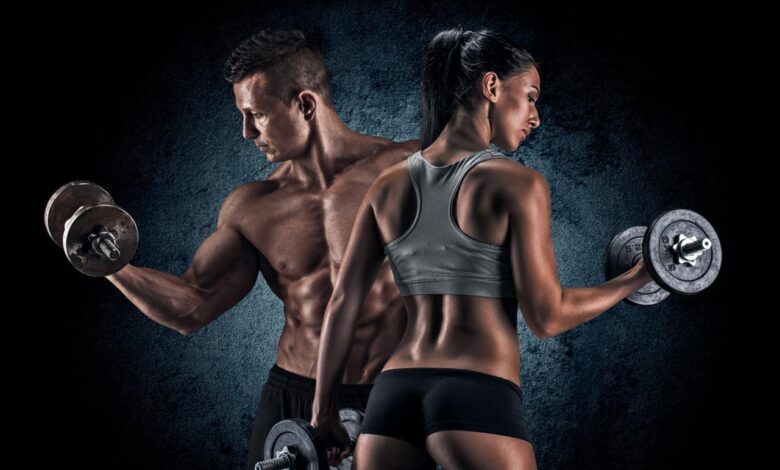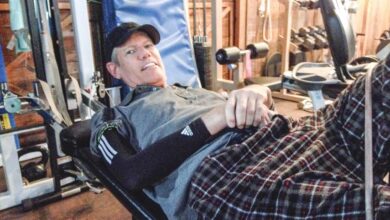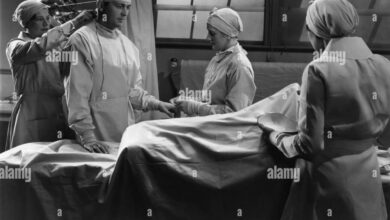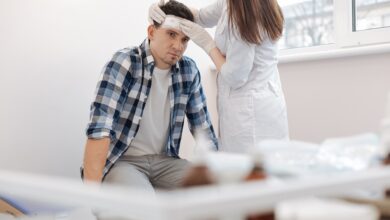
Massage can boost effectiveness of workouts, enhancing your performance and recovery. It’s not just about relaxation; massage plays a vital role in preparing your body for peak athleticism. From increasing blood flow to reducing muscle soreness, massage can optimize your training regimen and lead to better results.
This comprehensive guide explores how different massage techniques impact various muscle groups, accelerate recovery after exercise, and ultimately improve workout performance. We’ll delve into the science behind massage, comparing it to other recovery methods and showing you how to incorporate massage into your routine for optimal results.
Introduction to Massage and Workouts
Massage therapy offers a multitude of benefits beyond relaxation. From easing muscle tension to improving blood flow, it can significantly enhance athletic performance and recovery. Understanding the different types of massage and how they affect specific muscle groups is key to maximizing the benefits of both massage and exercise routines.Massage therapy is a powerful tool for supporting overall well-being, particularly when integrated into a workout regimen.
The techniques employed during a massage can promote physical changes that lead to greater gains in strength, flexibility, and endurance. By targeting specific muscle groups, massage can alleviate pain, improve range of motion, and optimize the body’s response to exercise.
Benefits of Massage Therapy
Massage therapy offers a wide range of benefits that extend beyond simply feeling good. It promotes relaxation, reduces muscle tension, and enhances circulation. These effects can lead to improved athletic performance, quicker recovery, and a reduced risk of injury.
Types of Massage Techniques
Various massage techniques cater to different needs and preferences. Swedish massage, known for its long, flowing strokes, is excellent for relaxation and promoting general circulation. Deep tissue massage, with its deeper pressure, targets chronic muscle tension and adhesions. Sports massage is often tailored to the specific needs of athletes, focusing on improving flexibility, reducing muscle soreness, and enhancing recovery.
Muscle Responses to Massage
Different muscle groups respond to massage in various ways. Muscles like the quads, hamstrings, and glutes, crucial for athletic performance, benefit from massage by experiencing increased blood flow, reduced soreness, and improved range of motion. The specific effects depend on the technique used and the individual’s needs.
Ever notice how a good massage can make your workouts feel way more effective? It’s all about those sore muscles and how they can affect your overall well-being, especially after a time change like daylight saving time. Are you feeling a little off lately? Check out this article to understand why you feel out of sorts after daylight saving time why you feel out of sorts after daylight saving time.
Those tense muscles from a disrupted sleep cycle can really hinder your workout performance. So, a massage can be a game-changer in helping you recover and get back on track, boosting your workout effectiveness.
Physiological Effects of Massage
Massage impacts the body in several physiological ways. It promotes increased blood flow, which delivers oxygen and nutrients to the muscles, speeding up recovery and reducing muscle soreness. Massage also facilitates muscle relaxation, releasing tension and improving flexibility. These effects contribute to improved performance in workouts and reduced risk of injury.
Comparison of Massage Effects on Muscle Groups
| Muscle Group | Effect of Massage | Impact on Workout |
|---|---|---|
| Quads | Increased blood flow, reduced soreness, improved elasticity | Improved power and range of motion, reduced risk of injury during explosive movements |
| Hamstrings | Reduced tightness, improved flexibility, enhanced blood flow | Enhanced flexibility during stretching and exercises, improved performance in activities requiring hamstring activation |
| Glutes | Improved blood flow, reduced stiffness, increased activation | Improved power and stability during compound movements, enhanced hip mobility and core strength |
Massage and Muscle Recovery
Massage therapy is more than just a luxurious treatment; it’s a powerful tool for enhancing athletic performance and promoting post-workout recovery. Understanding how massage affects muscle recovery can significantly improve your workout routine and minimize the time spent feeling sore. The benefits extend beyond immediate relief, contributing to long-term muscle health and preventing injuries.Massage’s impact on muscle recovery is multifaceted, acting on various physiological processes to speed up the healing and regeneration of muscle tissue.
By addressing factors like inflammation, nutrient delivery, and blood flow, massage can reduce recovery time and maximize the benefits of your workouts. It can also improve flexibility and range of motion, leading to better performance and a reduced risk of future injuries.
How Massage Accelerates Muscle Recovery
Massage therapy plays a crucial role in the intricate process of muscle recovery after exercise. By applying pressure and manipulating soft tissues, massage can break down adhesions, improve blood circulation, and reduce inflammation. This leads to a faster removal of metabolic waste products, such as lactic acid, which contribute to muscle soreness. This improved circulation also enhances the delivery of oxygen and nutrients to the muscles, further supporting the repair and rebuilding processes.
Role of Massage in Reducing Muscle Soreness (DOMS)
Delayed-onset muscle soreness (DOMS) is a common experience following intense exercise. Massage can significantly mitigate DOMS by addressing the underlying causes. The application of massage techniques can reduce inflammation and the accumulation of metabolic byproducts, thereby easing pain and discomfort. The improved blood flow facilitated by massage helps flush out waste products and bring in essential nutrients, accelerating the healing process.
Moreover, the release of tension in the muscles can also contribute to a reduction in pain perception.
Comparison with Other Recovery Methods
Various methods can aid in post-workout recovery, each with its own strengths and weaknesses. While stretching and active recovery are effective, massage often offers a more comprehensive approach. Stretching primarily focuses on increasing flexibility, while active recovery aims to maintain blood flow and reduce stiffness. Massage, on the other hand, tackles multiple aspects of recovery simultaneously, including inflammation reduction, improved circulation, and the release of muscle tension.
This holistic approach can lead to faster recovery and a more complete return to peak performance.
Improving Blood Circulation in Muscles
Massage techniques, like deep tissue or Swedish massage, directly impact blood circulation in the muscles. The application of pressure and movement enhances blood flow to the affected areas, facilitating the removal of waste products and the delivery of essential nutrients. Increased blood flow also helps reduce muscle spasms and stiffness, contributing to a more comfortable recovery. This increased circulation is crucial for delivering oxygen and nutrients to the muscles, aiding in the repair process and reducing recovery time.
Stages of Muscle Recovery and Massage’s Effect
| Recovery Stage | Description | Massage Effect |
|---|---|---|
| Inflammation | Initial phase of soreness, characterized by swelling and tenderness. | Reduces inflammation, promotes healing by increasing blood flow and removing waste products. |
| Repair | Muscle tissue regeneration and rebuilding, utilizing nutrients and oxygen. | Improves nutrient delivery and oxygenation, promoting repair by reducing adhesions and promoting cell regeneration. |
| Remodeling | Regrowth and strengthening of muscle fibers, improving overall muscle function. | Enhances flexibility and range of motion, promoting proper alignment and function. |
Massage and Workout Performance: Massage Can Boost Effectiveness Of Workouts

Massage therapy isn’t just a luxury; it’s a powerful tool that can significantly enhance athletic performance. By improving blood flow, reducing muscle tension, and promoting relaxation, massage can translate directly into better workouts and faster recovery. This synergy between massage and exercise is especially beneficial for athletes seeking to optimize their training and achieve peak performance.Massage can improve workout performance by targeting specific muscle groups, relieving knots and tightness that hinder movement and reduce the risk of injury.
So, massage therapy can seriously boost your workout gains, making those gains feel even more rewarding. However, it’s important to remember that while a good massage can improve your performance, some people unfortunately find themselves in danger with substances like the “gray death” latest dangerous street drug, gray death latest dangerous street drug. Prioritizing your well-being, both physically and mentally, is key, and that includes choosing healthy habits to support your workouts, like getting a massage.
This targeted approach can help athletes prepare for their workouts more effectively and recover more quickly after exertion. Ultimately, massage can improve overall athletic performance and enhance the experience of working out.
Improved Flexibility and Range of Motion
Massage therapy directly impacts flexibility and range of motion by relaxing muscle tissue and improving joint mobility. The application of pressure and stretching techniques during a massage breaks down adhesions and scar tissue, allowing muscles to lengthen and move more freely. This increased flexibility translates into greater range of motion, allowing for more effective and efficient movement during workouts.
For example, a runner who experiences tightness in their hamstrings will see an improved stride length and reduced risk of injury with regular massage.
Effects on Athletic Performance Metrics
Massage can positively affect various athletic performance metrics. Improved blood flow, a direct result of massage, delivers more oxygen and nutrients to working muscles, leading to increased endurance and potentially higher speeds. Reduced muscle tension allows for more efficient muscle activation, which can translate into enhanced strength and power output. For example, a weightlifter experiencing tight shoulders might notice improved lifting performance after a massage due to reduced muscle tension and improved blood flow.
Impact on Injury Prevention
Massage plays a critical role in injury prevention. By addressing muscle imbalances and reducing tension, massage helps to create a more balanced and resilient musculoskeletal system. This, in turn, minimizes the risk of strains, sprains, and other injuries. Massage can also identify and address potential problem areas before they develop into full-blown injuries, allowing athletes to maintain a consistent training schedule and minimize downtime.
Massage therapy can significantly enhance workout recovery and, in turn, boost your fitness gains. It’s crucial to prioritize your well-being, especially if you received the Pfizer or Moderna vaccines, and expect a booster shot starting this fall. This booster might impact your physical response to exercise, so incorporating massage into your routine can help manage any potential side effects and optimize your workout performance.
Getting a massage post-workout is a great way to improve muscle recovery and reduce soreness, which ultimately allows for more effective and productive training sessions.
For example, a tennis player who experiences recurring shoulder pain might benefit from regular massage to identify and address the underlying muscle imbalances that contribute to the pain.
Summary of Massage Benefits, Massage can boost effectiveness of workouts
| Performance Aspect | Benefit of Massage | Mechanism |
|---|---|---|
| Flexibility | Increased range of motion | Relaxation of muscle tissue, improved joint mobility |
| Strength | Improved muscle activation | Reduced muscle tension, enhanced blood flow |
| Endurance | Enhanced oxygen uptake | Improved blood circulation, reduced muscle fatigue |
Types of Massage for Different Workouts
Massage therapy can significantly enhance the benefits of exercise, whether it’s improving flexibility, reducing muscle soreness, or boosting recovery time. Understanding the different types of massage and how they relate to specific workout routines can help you optimize your fitness journey. Choosing the right massage type can greatly impact your overall performance and well-being.
Matching Massage Types to Workout Regimens
Different workout types place varying demands on different muscle groups. A yoga practice, for instance, focuses on flexibility and balance, while weightlifting emphasizes strength and muscle hypertrophy. Running, on the other hand, involves repetitive stress on lower body muscles. Understanding these differences is crucial when selecting a massage technique. The right massage can target specific areas, address unique muscle imbalances, and accelerate the recovery process.
Workout-Specific Massage Recommendations
The following table Artikels various workout types and the corresponding massage types that are often beneficial. The rationale behind each pairing is also explained, highlighting how the massage type supports the specific demands of the workout.
| Workout Type | Recommended Massage Type | Rationale |
|---|---|---|
| Yoga | Swedish Massage | Swedish massage, with its focus on long, flowing strokes, is excellent for improving flexibility and reducing muscle tension accumulated during a yoga practice. The gentle pressure promotes relaxation and aids in the release of knots and tightness in the muscles, which can hinder flexibility and range of motion. |
| Weightlifting | Deep Tissue Massage | Deep tissue massage, with its deeper pressure, is ideal for addressing the muscle soreness and stiffness often experienced after weightlifting sessions. The technique targets deeper layers of muscle tissue, breaking down adhesions and improving blood flow, which is essential for muscle repair and growth. The increased blood flow also helps flush out metabolic waste products, further promoting recovery. |
| Running | Sports Massage | Sports massage is particularly well-suited for runners. It focuses on addressing muscle imbalances and tightness specific to running. The massage techniques help improve flexibility and reduce muscle tension, which is crucial for injury prevention and enhancing performance. Sports massage also improves circulation and lymphatic drainage, aiding in recovery after intense running sessions. |
Practical Applications and Recommendations
Integrating massage into your workout routine can significantly enhance your results. Beyond the immediate relief of muscle soreness, regular massage promotes improved flexibility, reduced risk of injury, and a deeper connection to your body’s response to exercise. By understanding the practical applications and adhering to best practices, you can seamlessly incorporate massage into your fitness regimen for optimal performance and recovery.
Step-by-Step Guide to Incorporating Massage into Your Workout Routine
A well-structured approach to incorporating massage into your workout routine maximizes its benefits. This involves careful planning and consideration of the specific needs of your body and workout. Consistency is key for experiencing the full spectrum of benefits.
- Assess Your Needs: Before implementing a massage routine, consider your workout intensity and frequency. Identify specific muscle groups that are frequently strained or sore during your exercises. Are you a runner experiencing hamstring tightness? A weightlifter feeling shoulder discomfort? Knowing your specific needs allows for a tailored approach to massage.
- Choose a Qualified Therapist: Selecting a qualified massage therapist is crucial. Look for someone with experience in sports massage or a demonstrated understanding of athletic recovery. This professional will possess the knowledge to address your specific needs and tailor the massage to your individual workout style.
- Schedule Massage Sessions: Plan your massage sessions around your workout schedule. Pre-workout massages can warm up muscles and increase blood flow, while post-workout massages aid in recovery and reduce soreness.
- Communicate with Your Therapist: Clearly communicate your workout routine and any specific areas of concern or pain to your therapist. This will help them customize the massage for optimal results.
- Listen to Your Body: Pay attention to how your body reacts to the massage. If you experience discomfort, communicate this to your therapist immediately. Trust your intuition and adjust the massage intensity as needed.
- Consistency is Key: Regular massage sessions, integrated into your workout routine, are vital for sustained benefits. Aim for a consistent schedule that aligns with your workout plan.
Examples of Pre- and Post-Workout Massage Routines
The optimal massage routine depends on the type of workout and individual needs. Pre-workout routines aim to prepare the muscles, while post-workout routines focus on recovery.
- Pre-Workout Massage (Example): Light massage focusing on areas like the hamstrings, quadriceps, and shoulders to improve blood flow and warm-up muscles.
- Post-Workout Massage (Example): Deep tissue massage focusing on areas that experienced the most strain or soreness during the workout. This could include the back, legs, or chest.
Importance of Choosing a Qualified Massage Therapist
A qualified massage therapist possesses the expertise to tailor a massage to your specific needs and workout. They understand the nuances of muscle recovery and can provide targeted techniques that support your fitness goals. A qualified therapist is also adept at identifying potential risks and addressing any concerns that may arise.
Optimal Frequency and Duration of Massage Sessions
The ideal frequency and duration of massage sessions depend on individual needs and the intensity of workouts. For example, athletes training rigorously might benefit from more frequent sessions compared to those with a less intensive routine. Consult with your therapist to determine the most suitable frequency and duration for your needs.
Workout Frequency Recommended Massage Frequency High-intensity workouts (daily) 2-3 times per week Moderate-intensity workouts (2-3 times per week) 1-2 times per week Low-intensity workouts (1-2 times per week) 1 time per week or as needed
Conclusion

In conclusion, incorporating massage into your workout routine can significantly enhance your overall athletic performance. By understanding how massage affects different muscle groups, recovery stages, and workout types, you can tailor your massage sessions to maximize your gains. From pre-workout warm-ups to post-workout recovery, a strategically implemented massage routine can help you achieve your fitness goals and stay injury-free.
So, embrace the power of massage and unlock your full athletic potential!



